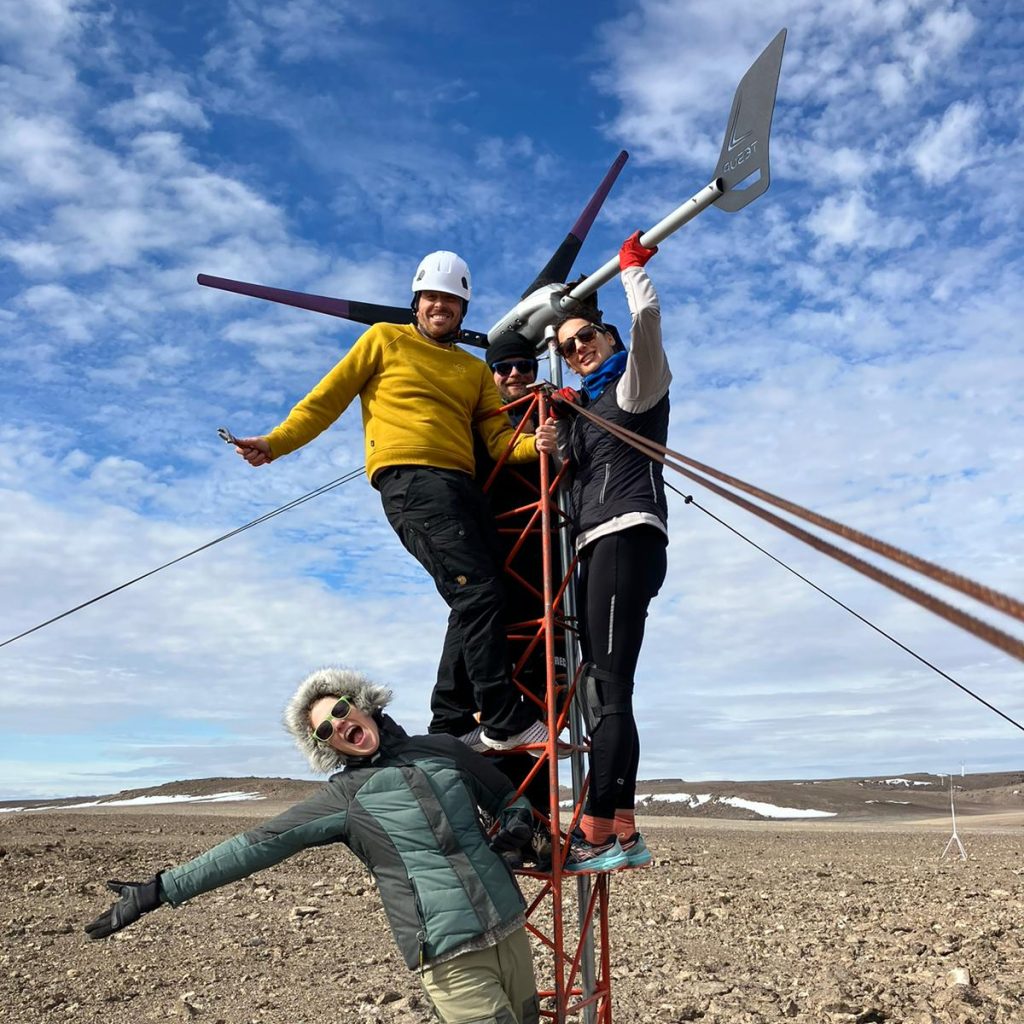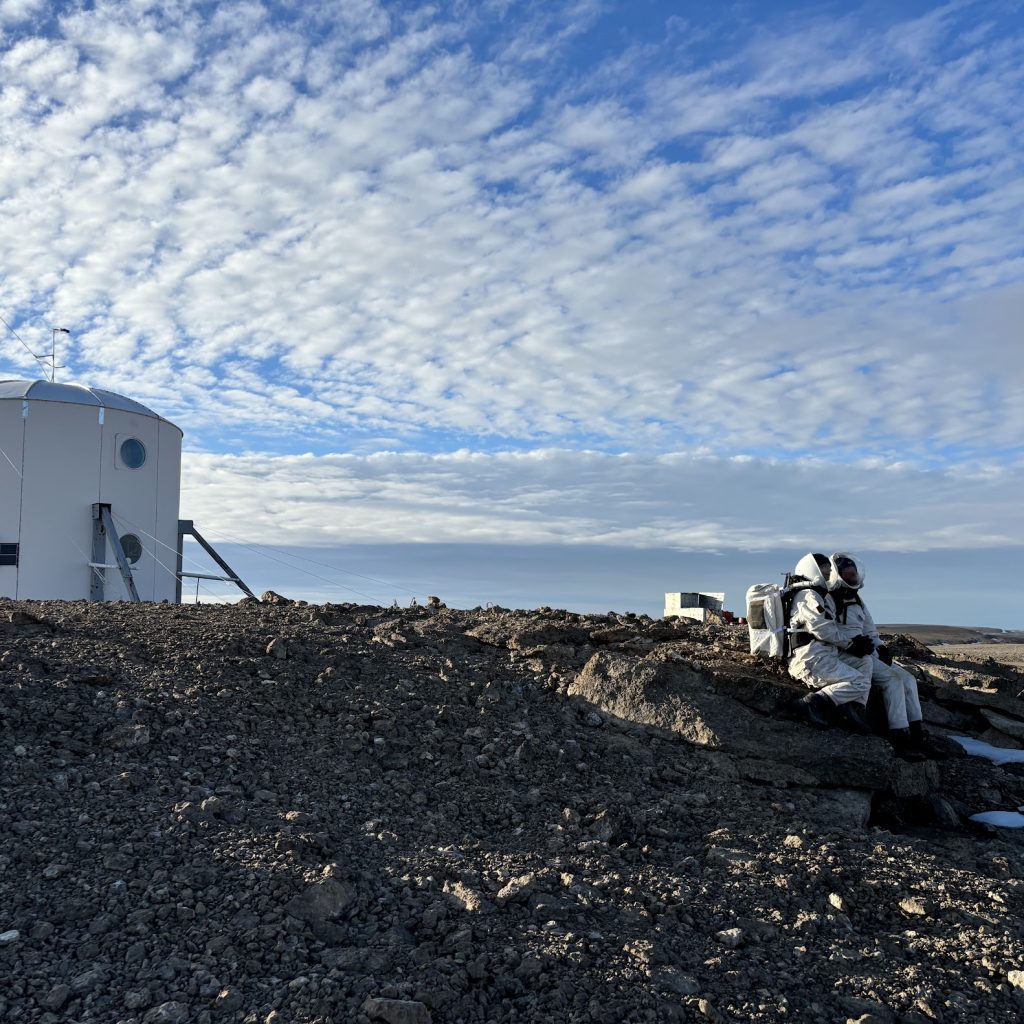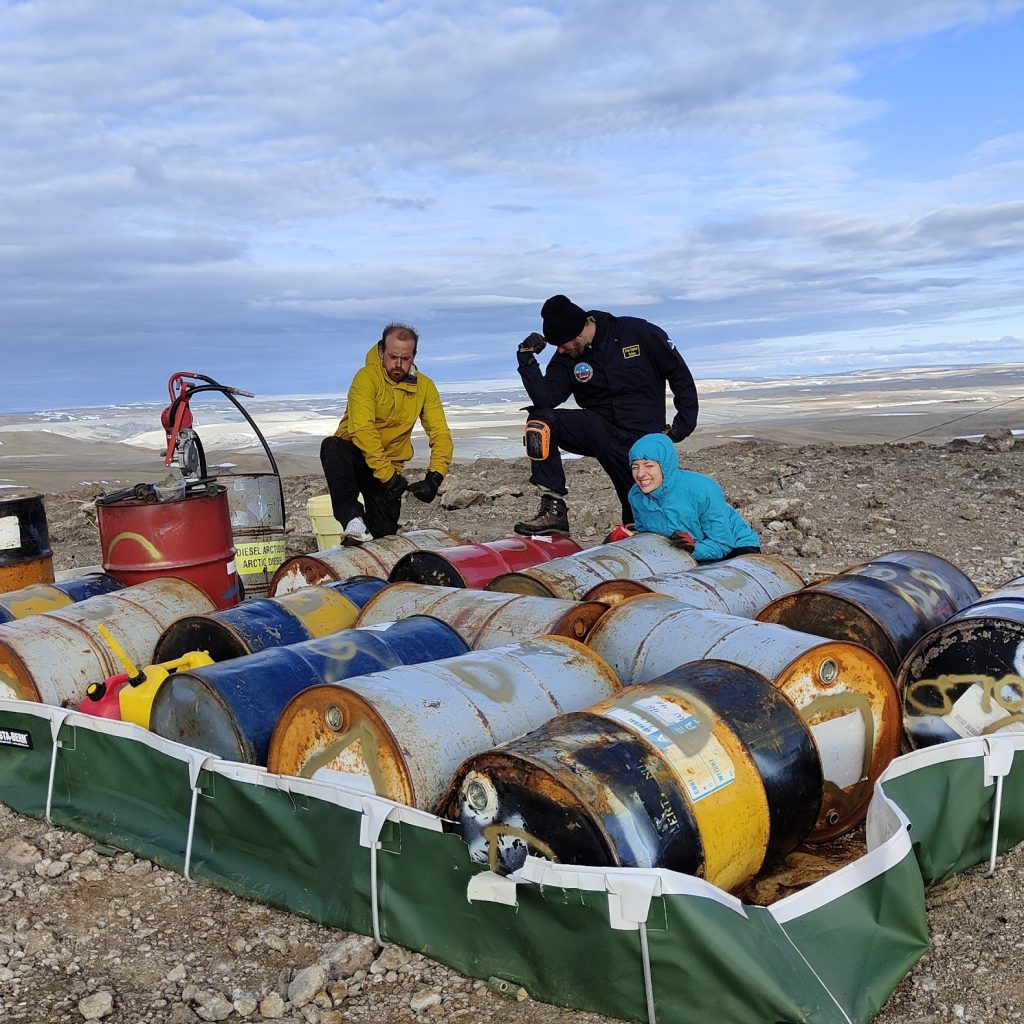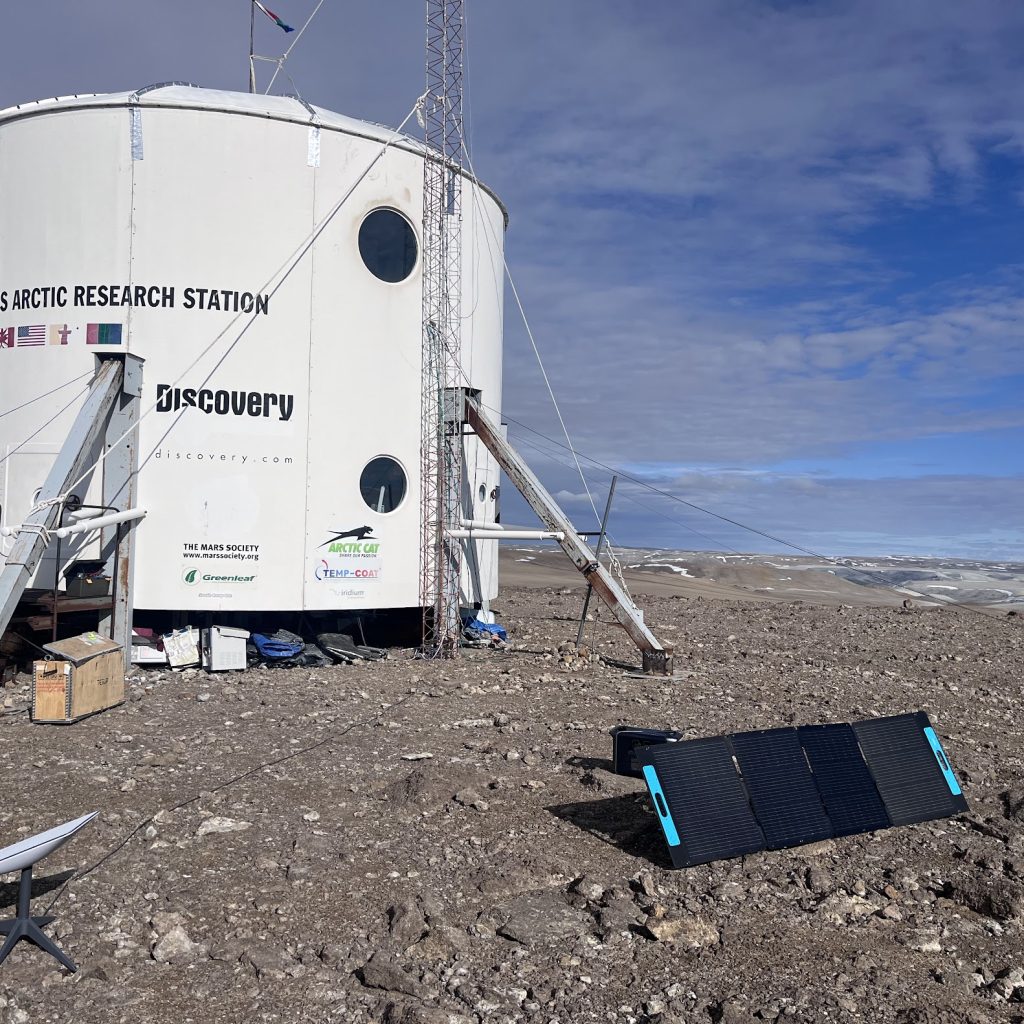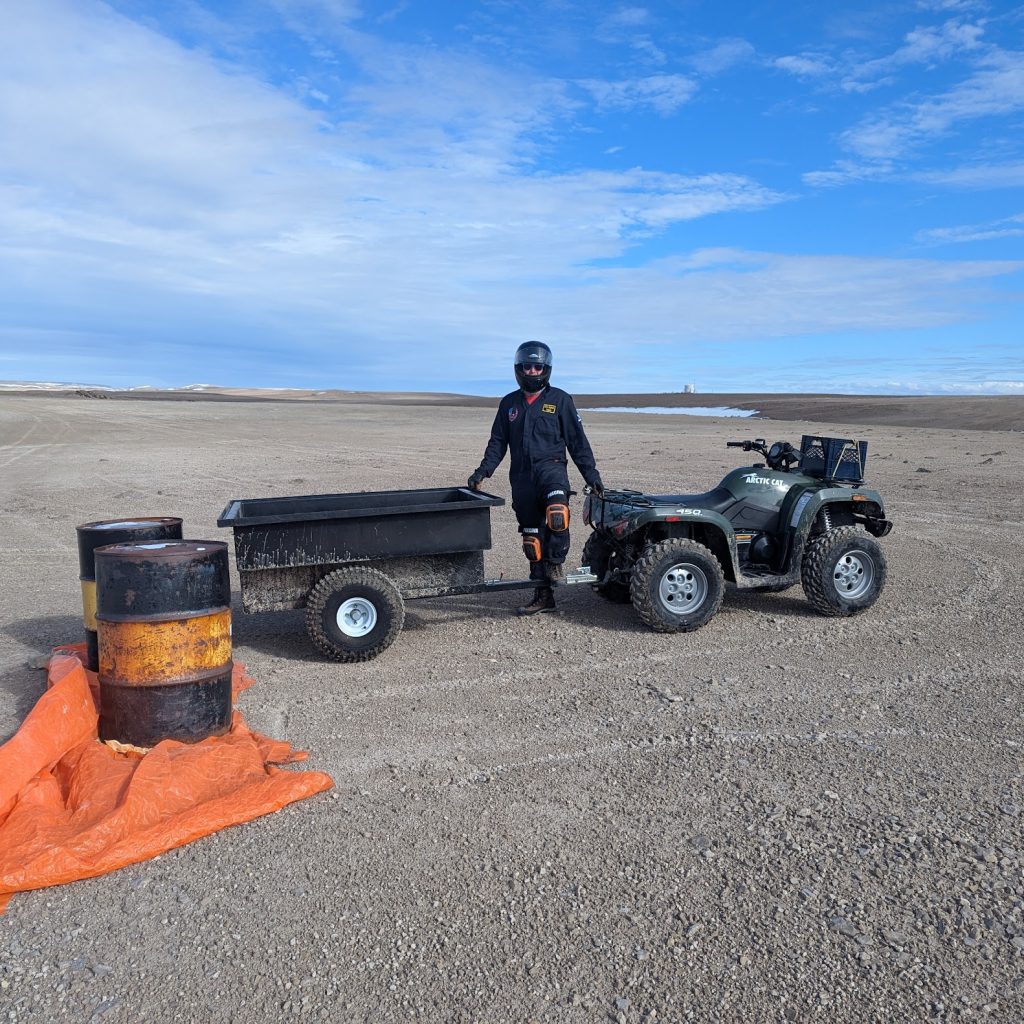FLASHLINE-16 Daily Report 10-07-2024
Author: Michael Andrews – Crew Logistics
The Arctic Wolves team started the day with the assumption that we may have to depart as early as 1800 tonight. We later learned that we would have more time than expected until our departure flight, but we had the following objectives initially:
- Organizing the inside of the habitat for departure
- Disassembling and storing outside equipment
- Taking inventory of the exterior material
- Pre-staging weatherproof material at the airplane runway
I spent some time in the morning tidying up the first floor, putting items away from our whirlwind of simulations. The area was in good shape by the time the crew woke up, and we discussed our flight plans.
Our original plan was to depart from Devon Island on Thursday evening around 6 PM, but we had a potential window on Wednesday at 6 PM. However, low cloud layers (the same condition that held us up in Resolute) were disrupting flight schedules. Our best possibility for takeoff would be early Friday morning, which gives us less than two hours in Resolute before our commercial flights south. It would be threading a needle, but it was possible! The team took this as a call to action to get into a state where we would be ready to depart in a two hours’ notice as soon as possible.
The first task we tackled was disassembling the turbine from its tower. Although easier than installing the tower, it was still a task that required the whole crew to do safely. Some of the team worked on tidying the science lab, and others worked on categorizing the items under the habitat for retention. We also began taking leveling measurements for the habitat to understand its structural condition.
Crew Engineer Robbins and I loaded up two drums of old gasoline to take to the runway. We couldn’t use it anymore since the gas has separated, but some folks at Resolute were eager to treat it and make it usable again. After the runway was loaded, we opened all fuel drums, confirmed their contents, marked them externally, and laid them down for better storage. Although it’s not intuitive, laying a fuel drum on its side allows the fuel to lubricate the seals on the bung caps, and prevents water pooling and corrosion of the seal. Moving and lowering the drums was intense work, but good coordination and safe lifting practices were exercised.
The final task we completed this evening was trialing our solar panels. The Anker battery pack offers a solar panel accessory, and we wanted to test how effective it would be to generate power. In about 2 hours, we had recovered 17% of our 1800W power station. There are dreams of adding fixed solar panels to our habitat that can collect charge to power the station without generators, especially considering we have 24/7 daylight during the summer. Today’s effort was a good proof of concept.
As the team ate dinner and watched a movie, we realized all that we had accomplished and what little remained. We estimate that we are a little more than 2 hours of work away from habitat departure, whenever our flight is confirmed. Weather is also starting to worsen, similar to the initial conditions when we arrived 8 days ago. Looking back on conditions, we were extremely fortunate to have such clear and sunny days during simulation.
